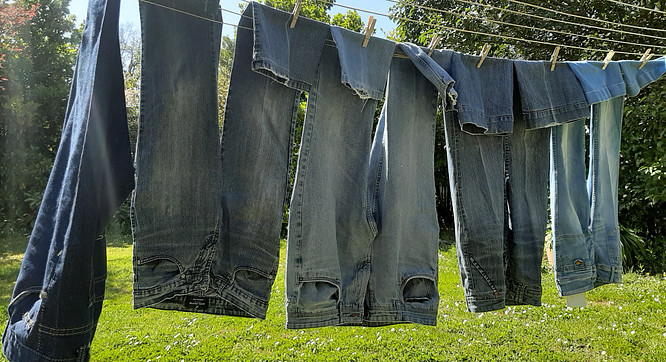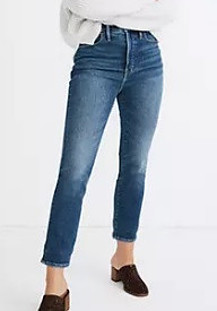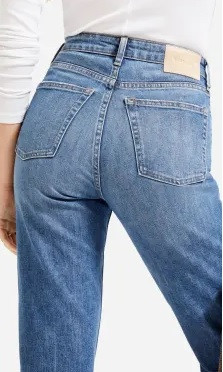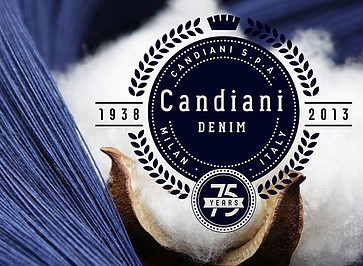If you are a denim addict that respects the planet, you might have asked yourself the question of how sustainable is denim fabric? The best sustainable jeans will help you to look good sustainably, without harming the environment. In an industry where trends are always changing, bringing new styles and fabrics to the fore can seem quite a challenge, however, sustainability is not a limit to style.
Is Denim Sustainable?
With a climate crisis on the horizon, there has never been a better time to commit to sustainable fashion.  The textile industry has increasingly been put under the magnifying glass with organic cotton and denim being scrutinized to establish how sustainable is denim. Related post: Best 100% organic cotton jeans from Nudie Jeans.
The textile industry has increasingly been put under the magnifying glass with organic cotton and denim being scrutinized to establish how sustainable is denim. Related post: Best 100% organic cotton jeans from Nudie Jeans.
More and more brands are showing greater attention as to how this blue canvas is produced and wanting to ensure that production is not only sustainable, but also respectful of the planet.
Thousands of liters of water are used to produce a single pair of jeans, with chemical rich dyes polluting the water.
Consumers are more informed and aware of their environmental footprint, and is therefore demanding that companies pay more attention. There is a push towards a circular economy and wanting the blue denim canvas to be “greener”.
Brands like the Los Angeles based brand ReDone, give life to old models that have been discarded, by recovering and reassembling vintage garments. You can read more about ReDone and sustainable denim practices in this related post on the 8 Best Green Jeans Denim Brands.
Fibers Determine How Sustainable is Denim Fabric
The sustainability of denim fabric would depend on the origin of the fibers that are used, being it natural, artificial or synthetic.
- Natural fibers are derived from materials that are present in nature. It would either come from plants, like cotton, linen, bamboo and hemp, or it would be derived from animals, like silk, wool and leather. Discover more about natural fibers in this post on What are Natural Fibers.
- Artificial fibers are derived from natural products, but through chemical processes, they are then reworked to produce fibers. These include cellulose fibers, like viscose from trees, milk fiber from animals, or orange and apple fibers derived from agricultural waste. Discover more about cellulose fibers in this post on Viscose fabric – the textile made from cellulose. Orange and apple fibers are discussed in this post on 5 Innovative Textile Solutions for Vegans.
- Synthetic fibers are made through transformation of chemical substances, with the origin being petrochemical. If you are interested to learn more about synthetic fibers, then read this post on Synthetic fibers vs natural fibers – which one will you choose.
Natural fibers are the most sustainable and depending on the production processes used for natural fibers, will have a varying impact on the environment. Synthetic fibers are the least sustainable and eco friendly and leaves the biggest carbon footprint. Artificial fibers are somewhere in the middle, with concerns that cellulose fibers are derived from wood, which can lead to deforestation.
To establish how sustainable is denim, production processes also need to be considered. The best sustainable jeans would be made from natural fibers with organic cotton high on the list. Read more about organic cotton in this post on the 10 Best Organic Cotton Jeans Brands.
1. Levi’s
We cannot talk about how sustainable is denim without including Levi’s. Levi has been a pioneer in the search for alternative production methods of their legendary jeans. Levi’s has several initiatives that support and show how sustainable is denim fabric, when eco friendly practices are followed. 
- Recycled denim is a collection made with organic cotton and circulose. Circulose is a special regenerated fabric that is created by the Swedish startup Renewcell. Renewcell is recycling cotton fabrics, with a process that is similar to that used for recycling paper. Through the recovery of used clothes, a cellulose fiber that is equivalent to natural fibers, is produced. New clothes can be made from it. Circulose is an awesome example of how sustainable is denim fabric. You can read more about circulose in this post on What is cellulose pulp and what is Circulose.
- Levi’s is strengthening their contribution to sustainability and is launching Levi’s SecondHand, a buy back and resale program. Levi’s SecondHand will enable customers to return used jeans and jackets in the stores and receive a gift card of $15 to $25. These can be redeemed against buying second hand clothing from Levis.com marketplace.
- Previous support of green fashion has been seen in their Wellthread and Outerknow collection. This was launched in 2019, where hemp, rather than cotton, is used. Hemp is a more eco-friendly and sustainable fiber than conventional cotton.
- Wellthread is a line that includes cottonised help products, a material that requires less water and pesticides for its cultivation.
- Levi’s Waterless way of dyeing fabric uses a production cycle with very low quantities of water.
Levi’s is one of the best sustainable jeans brands. They already have the majority share of the second hand and vintage market, with the younger generation having a very high interest in the second hand market.
Use this link to get your pair of Levi jeans at the best price.
2. Madewell
Madewell is all about is denim sustainable and Fair Trade certified. They use organic cotton in some of their denim and have partnered with the Better Cotton Initiative (BCI) to improve global cotton farming. They also use recycled polyester and viscose, a cellulose fiber derived from wood. 
In partnership with Fair Trade USA, Madewell has launched a Fair Trade denim collection. By supporting jobs with dignity, they want to build a better future for workers. Essentials like fair wages, healthy working conditions and maternity leave, are a part of the program.
Madewell pays a premium directly to a community development fund for every certified Fair Trade product that is produced for them. The fund is run by people who make Madewell clothes. Their partnership with the Better Cotton Initiative (BCI), is to integrate cotton that is grown under strict conditions. This is to improve the livelihood of the growers and workers, and also protect the environment. These are all ways to improve how sustainable is denim.
Fabric and fibers that Madewell use to ensure how sustainable is denim fabric, include these:
- Recycled cotton that comes from old garments and fabric that is leftover from production.
- Tencell Lyocell (viscose) that is made from wood pulp that is derived from sustainable forests.
- Recycled plastic in the from of PrimaLoft, which is used as insulation in jackets. It is as warm as down, but made from a hundred percent recycled plastic bottles.
They offer repairs like hemming and mending in their stores. With a program of Reuse, those jeans that are returned and are still good enough to be worn, is resold through ThredUp as previously loved jeans.
Madewell also recycle old jeans into insulation for housing.
3. Everlane
Everlane is an American brand that was founded in 2010. Their jeans are made in the denim factory Saitex, which is a LEED Certified facility. Through a unique closed system, the factory recycles 98 percent of the water that is used and the water is clean enough to drink. It means that only 0.4 liters of water is used to make a pair of denim jeans.
If you are still wondering is denim sustainable, then Everlane proves that it can be.
Saitex gets electricity from alternative sources of energy. The entire factory uses solar power, which is renewable. It has meant that carbon dioxide emissions have been reduced by almost eighty percent.
When denim is made, a toxic byproduct called sludge, is created. Saitex extracts the sludge from the water and ships it to a brick factory nearby. There it is incorporated into bricks, which is used to build affordable housing.
Everlane jeans are air-dried in the factory, further reducing the amount of electricity that is used. By re purposing byproducts, the factory is almost a zero waste facility. So your cleanest pair of jeans is produced with clean water, clean energy and clean waste, resulting in the best sustainable jeans.
Their ethical approach means they visit the factories that they use on a regular basis. They evaluate environment, working hours, fair wages and other factors that could affect not only workers, but also how sustainable is denim fabric.
Everlane mixes sustainability with transparency. They share with customers the exact breakdown of the cost of each item and also show the factories where garments are made. The company builds strong relationships with factory owners. This is to ensure that the employees and production, meet Everlane’s high ethical standards.
Everlane recently released a line of clothing made from recycled plastic bottles and other reused materials.
4. Candiani Denim
Candiani Denim is a specialist in denim and sustainability and was founded near Milan, Italy, in 1938. Since then, it has grown to become one of the best and most sustainable denim mills in the world. It is regarded by many as the greenest textile company in the world of the blue canvas. They strongly believe in innovation, sustainability and the Made in Italy label. 
The area where the Candiani production facility is, is located in a nature reserve, making them particularly sensitive to environmental issues and how sustainable is denim fabric production.
They have their own Developement Centre where amongst other things, they develop new washing techniques for a more sustainable way of treating denim garments. Sustainability also means social responsibility.
When you source Candiani denim, you are buying premium quality denim that is soft to the touch. It has an amazing color and innovative performance, as well as a much cleaner piece of fabric.
Candiani and Kitotex
Candiani produces denim for some of the most prestigious brands in the fashion and denim world, like Stella McCartney, Denham and the eco-friendly denim of Liu Jo. Liu Jo recently launched a collection with 13 eco-friendly garments.
Kitotex is the only way Candiani denim is dyed and it replaced all the toxic chemicals that are normally added to indigo. Kitotex is the patented name for Kitosan, which is a natural polymer that is obtained from food waste, like recycled shrimp shells. It is used to cover the yarns after the dyeing process. Therefore, it replaces all the sizing agents, fixing agents and products such as polyvinilic alcool (PVA) that end up as micro plastic particles in our water.
Kitosan is 100% biodegradable and is naturally anti-bacterial and anti-static. Vegetal Chitosan has also been added, which reduces the consumption of water, chemicals and energy in the production process.
Is Denim Sustainable?
More and more fashion companies, from luxury brands to fast fashion brands, are implementing sustainability initiatives.
If you look at some of the innovative practices that these companies follow, then, it shows us how sustainable is denim and it is possible to have sustainable denim jeans.
I would like to hear you views on how sustainable is denim fabric, so if you have any suggestions or comments, then please leave them below and I will get back to you.
.

Levi’s jeans are the most coveted pre-owned and vintage items worldwide. This heritage brand has a degree of circularity unsurprisingly built into its 167-year-old DNA. And I commend the brand’s major step to extend the lifespan of its jeans. Not all companies would be interested in doing that. They only care about selling more and faster.
Levi jeans are indeed iconic and it is awesome that they are also looking after the environment.
I feel that in many ways denim is sustainable. Denim jeans seem to last for many years in my closet. While I’d love to purchase some of these brands that have sustainable practices, I have to get jeans in my size and they don’t always cater to taller women. For me, the best I can do is buy the brand that sells my size and use them until they wear out!
Many brands do have denim jeans for taller ladies and the best is to wear them untill they fall apart, and then repurpose or recycled them.
Thanks so much for sharing a great article to know more about if denim fabric is sustainable or not, as many people love to have not one but many pair of jeans, some people was looking for an answer to know more about how much damage jeans are doing to the world, your article will help many to know more about this topic and as a sewer I must say denim from old jeans is perfect to make many projects like bags, pencil bags, and many more.
Old jeans can certainly be repurposed and make great bags as you mention, as well as other items. The fibers that are used will also affect how sustainable is denim fabric, but it is great that more sustainable practices are being used.
I recently received a refrigerated item in the mail and it was partially insulated with denim. Although I was pleased to see the denim recycled, I was concerned about whether it was biodegradable. It’s nice to see that these companies are doing what they can to reduce the impact of their clothing on the environment. And, of course, Levi leads the pack. They’ve always been pioneers in the industry!
Oh wow, I have not come across denim being used as insulation, but that is awesome. I will investigate it more.
I really enjoy reading your posts and love the tips you provide on all things organic. I have been thinking about organic mostly when it comes to food and products we use, especially skin products. I will also start to look at the clothing aspect with caution. My concern though is that brands that use original cotton are really pricey, which makes them less accessible to the majority.
Not all organic cotton brands are pricey, and when you weigh up the difference of the true cost, between buying a good quality product, and a cheap one that needs to replaced every year, then the sustainable one wins every time. I hope that helps
Hello there thanks a lot for sharing this beautiful piece of information here with us. I must say i really did enjoyed going through your review as it contains valuable informations one needs to be aware of. I am not into denim jeans but i think these point of yours one can tell they are sustainable for our ecosystem
Thank you for your kind comments and indeed it is good to learn how sustainable is denim fabric
thank you for sharing this beautiful piece of information without. I must say I really enjoyed going to your review as it contains valuable piece of information one needs to be aware of. I learned about a few new brands here today and was pleasantly surprised to learn that Levi’s is still pioneering things in the denim world. Jeans have always been the most durable items in my wardrobe
Levi is indeed one of the best sustainable jeans brands around and have been for years.
Thanks for sharing your research and insights on denim and sustainability. I learned about a few new brands here today and was pleasantly surprised to learn that Levi’s is still pioneering things in the denim world. Jeans have always been the most durable items in my wardrobe, but there is almost always room for improvement. Thanks for sharing all the options and things to look for when purchasing new jeans!
Jeans are very durable so it is great that some of the best sustainable jeans brands are using fibers and processes to show how sustainable is denim fabric when the right practices are used.
Hello, before reading your article, I was actually quite ignorant of the question of sustainability when it comes to jeans brands. In my non-informed opinion, I thought jeans would be relatively “sustainable” as they are made from cotton, and cotton is a natural fiber. Of course, I did not think of or consider the whole production process, dyes that are used for jeans, etc. So you have changed my opinion and level of information with your article. I have recently come across the brand Everlane and checked out their website, I really like the type of clothing they offer, and the fact that they are on the “sustainable” side of things is yet another bonus point. One thing I am wondering, are there also companies that upcycle old jeans to your knowledge? I am sure millions of jeans get thrown out every day globally, and I wonder if there are companies that would reuse old/used jeans to make a new product? Thank you very much for offering your expertise! All the best, Drea
Hi Drea, thank you for your kind comments and there is indeed a Swedish company, Renewcell, that is upcycling old and unsold jeans. They recover the cellulose pulp to make circulose, which is then used to make new jeans and other garments. Levi is using it already and you can read more about it in this post on What is cellulose pulp and what is circulose. I hope that helps.
I totally agree with the first few lines of this article where you mention that climate change is on the horizon which is why we should review our clothing choices more carefully. I have been wearing Levi clothing for a while now because they represent sustainability- i think more clothing brands should take a leaf out there book and follow some of the principles which they adopt. (i.e using second clothing is a great way of re-using denim)
Thanks for this article, it was a great read.
Hi Joe, thank you for your kind comments. Levi jeans are sustainable and also have great styles that look good. They incorporate many practices that show how sustainable is denim fabric when the right fibers and processes are used.